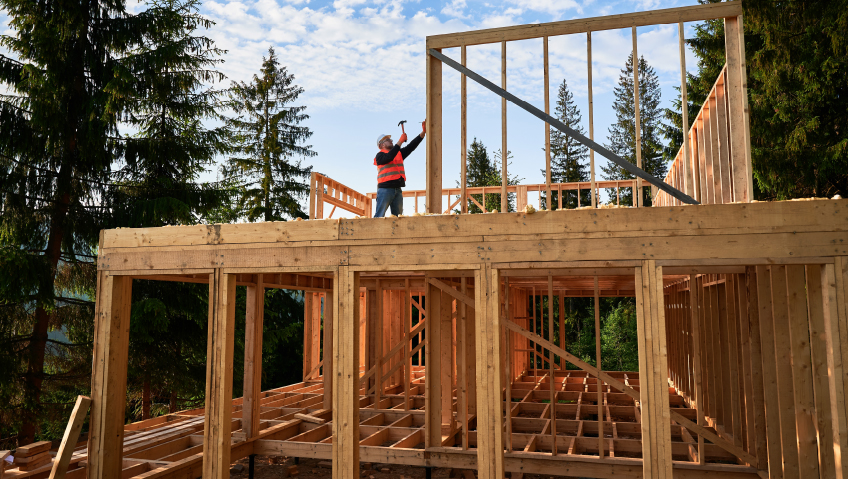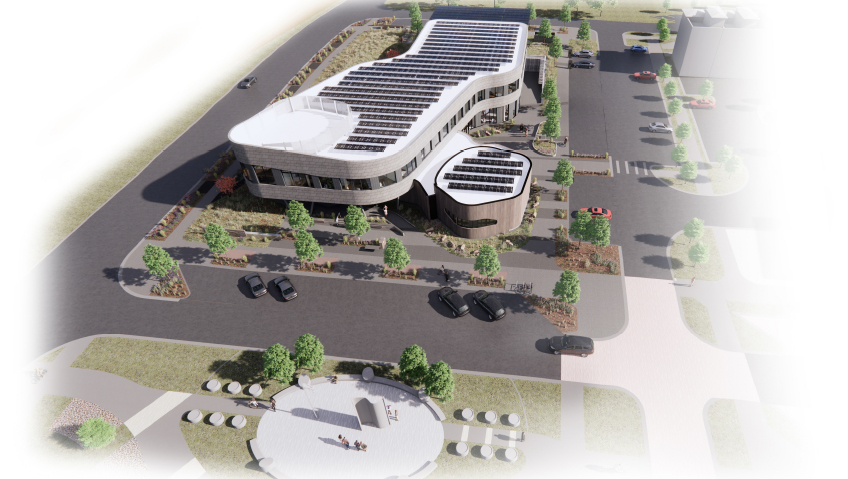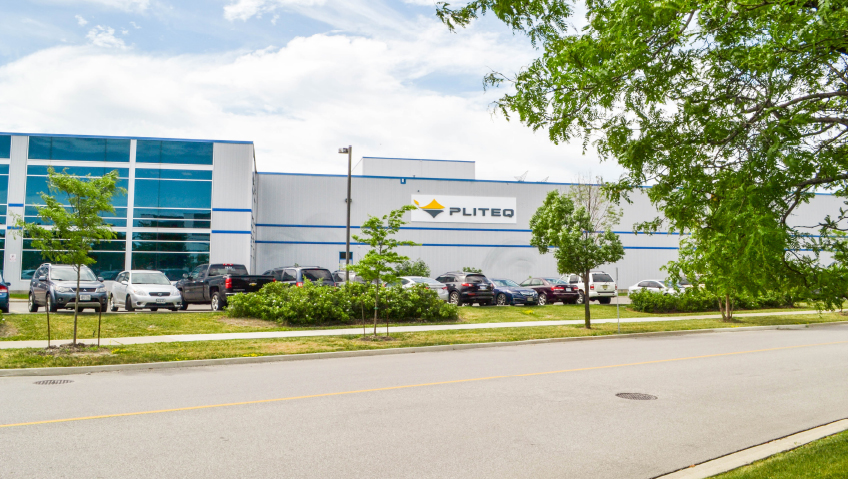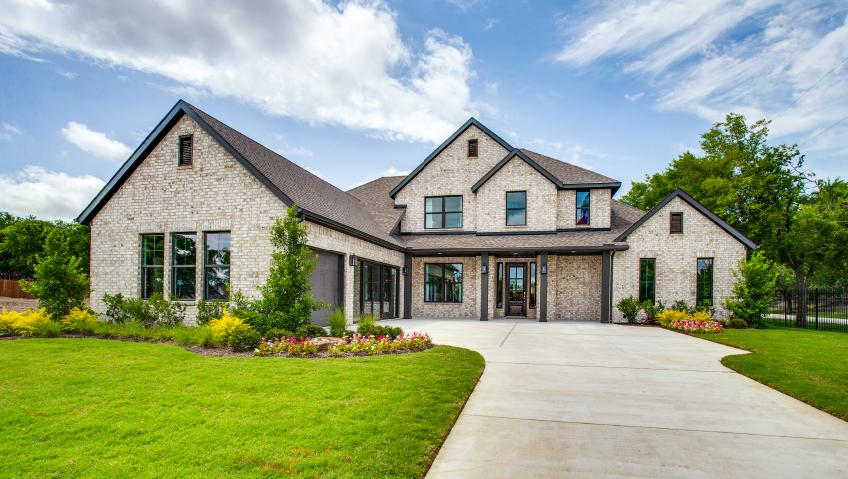At the University of British Columbia in Canada, a 60-member student team came together to build a new teaching and learning space that was designed to be near-zero embodied carbon. Called Third Space Commons, the project is a 2,400-square-foot wood frame building that marks the first of its kind designed by a student team.
Virtually every material and construction technique used in the institutional building was chosen because it lowered or even captured carbon emissions, setting the bar high for future sustainable design on campus and beyond. Materials included hempcrete, a combination of hemp mixtures and lime which captures carbon from the atmosphere while it sets. The foundation was made from reusable steel piles and light wood framing instead of engineered wood. It’s a beautiful, relaxing space with plenty of natural light.
“We sought to create an addition to campus that encourages interdisciplinary action of climate change, both as an example and through its eventual use,” UBC architecture student Katie Theall told UBC News on April 13, 2023 for the article ‘Come for the selfie, stay for the sustainability.’ “As a sustainability living lab and flexible collaboration space, we hope Third Space Commons will inspire future building industry leaders and cultivate innovation.”
Buildings like Third Space Commons exemplify how green principles are becoming more of a mainstay within the design and construction industry. Right now, the use of green materials and construction methods has steadily increased to the point where the World Economic Forum points to pent up demand for green buildings, with about 65 percent going unmet in New York City for instance.
And while in the past, some would have been deterred by the additional costs of applying green construction processes or sourcing green materials, the benefits that come from a sustainable focus are becoming more widely known and sought out. The commercial real estate market is seeing a premium for green buildings. In the Los Angeles market, for example, the U.S. Green Building Council (USGBC) noted that LEED-certified spaces garnered $2.91 per square foot, while traditional non-LEED certified buildings are earning $2.16 per square foot. These buildings also enjoy operational cost savings and have delivered an increase in asset value of 10 percent or more, making them more appealing to potential owners.
In the bigger picture, sustainable design, construction, and operations combine to deliver buildings that reduce carbon emissions, energy, and waste. These buildings also help to conserve water and lower our exposure to toxins with safer methods and materials, making the construction industry better for people and the planet.
So how is green construction advancing today? To a very high degree, green construction is adding jobs to the industry, according to the USGBC. Sustainable construction has created millions of jobs and contributed billions of dollars to the U.S. economy. And the market for green materials has been valued at approximately $475 billion and is expected to grow to more than a trillion dollars by 2033, reports GlobeNewswire.
Primary green construction materials include bamboo, rammed earth, cork, recycled glass, straw bale, aerated concrete, earth blocks, recycled steel, and hempcrete (used to construct the Third Space Commons building at UBC). Each has specific uses in structures and furnishings, but all have advantages in reducing waste and minimizing energy consumption. In fact, simply making traditional concrete contributes an estimated eight percent of the world’s global emissions—almost three times the emissions that are produced by airline travel.
A recent example of innovation combines two longtime materials, steel and concrete, to form a new material that both holds building up and brings emissions down to nearly zero. The process, developed by researchers at the University of Cambridge, uses electric furnaces in the steel industry to recycle cement that is recovered from buildings that have been demolished. As one of the researchers, professor Julian Allwood, told the Wall Street Journal in the May 23 article ‘New Green Cement Production Method Could Bring Emissions Close to Zero,’ “It’s remarkably simple, and I think when we started, our concern was that it was quite a simple substitution. So, would it work if nobody did it before? Improbably it did work.”
Typically, when steel is melted down for recycling, a compound called flux is used to eliminate impurities. While effective, this creates a “dirty” byproduct known as slag. The researchers used recycled cement instead of flux when the steel was melted and the slag in this case ended up being usable cement. The whole process of building demolition has more green potential than ever before with salvaged materials and recycled cement.
There are in fact several current techniques that are becoming more common across the construction landscape. One of those is prefabrication. The idea behind this is that if you can build as much of your building as possible in a controlled environment, you can reduce the level of waste produced while improving the overall quality of a structure. A May 20, 2020 article on For Construction Pros, ‘5 Techniques for Sustainable Building Construction,’ points to the example of McGough Construction which prefabricates forms for projects like the concrete structure for the Ordway Center for the Performing Arts in St. Paul, Minnesota. The company used 3D models to prebuild the forms inside its warehouse and away from the impact and unpredictability of the weather. From there, the team transported the components to the site and assembled them, much like a giant model.
Another important way to improve on the environmental impacts of construction projects is to reduce the waste generated by sorting haulers. Now the sorting of materials can be done by pickers, and some projects are now able to process up to 90 percent of waste leftover from the construction work.
The construction site itself is also an opportunity to make construction a greener process. Avoiding water runoff from a site is a major way to reduce contamination of surrounding areas. Silt fences can contain water used on a site and “walk-off mats” can help remove lead and other toxins from a site that would otherwise be carried around on workers’ boots.
In addition to the new processes and techniques making construction greener, some classical construction techniques are seeing a resurgence because of the benefits they can offer the environment. For instance, long before modern HVAC existed, builders would rely on architecture to help stabilize indoor conditions. Known as passive solar design, the actual positioning of a building as well as the placement of windows was carefully thought out to make the most of natural heating and cooling. These principles can be paired with modern HVAC technology to further reduce energy consumption by a building.
In the same vein, traditional processes to harvest rainwater for gardens and toilet flushing is also being put to use to reduce the strain on municipal water sources and lower bills for building owners.
The main purpose in bringing back traditional techniques is not to do away with modern design and technological advances. It is to make those advances even better by applying time-tested solutions to find further efficiencies that can reduce energy use and resource stress. And all of this is even more important as the need for affordable housing is being felt almost everywhere. Although there is growing demand for more homes, if construction is sped up without incorporating sustainable design, the impacts of more building will only further complicate our climate issues.
On the face of it, using greener techniques and materials may further add to the cost of building and construction. But by and large, costs for more efficient buildings are only about three to four percent higher than building to minimum code requirements. When compared to the overall reduction in expenses during the lifetime of the home—including heating and cooling as well as savings on water and reducing waste—the upfront costs tend to fade fast. And there is also the boost in value that greener homes enjoy in the market. The University of Texas at Austin analyzed the resale value of homes in the Austin region and noted that homes that are LEED-certified showed an eight percent increase in value while homes that were built to other green standards also saw a six percent increase in value, as reported by the USGBC.
Certainly, there are a lot of reasons why green construction is moving from niche to mainstream in both commercial and residential construction. The benefits are not only helping the Earth but are boosting many companies’ bottom lines while enhancing quality of life for inhabitants. Let’s call it a win-win-win.






